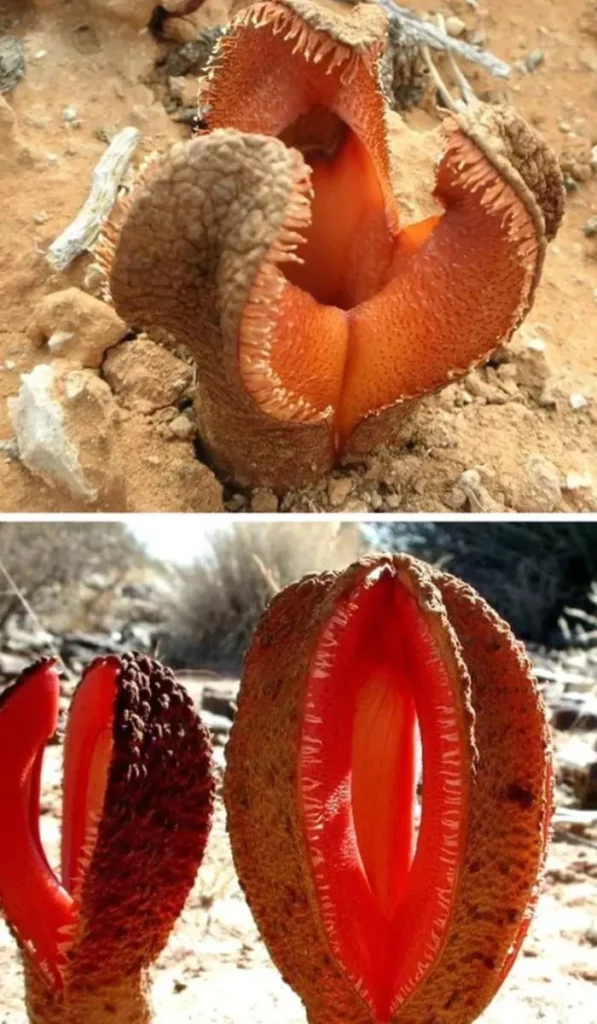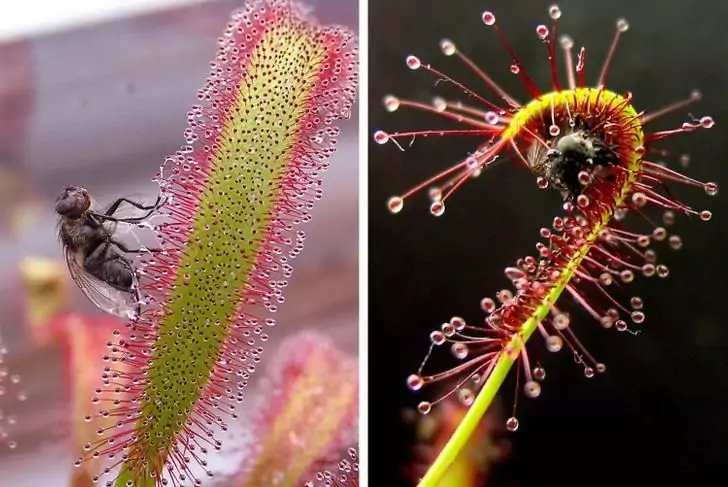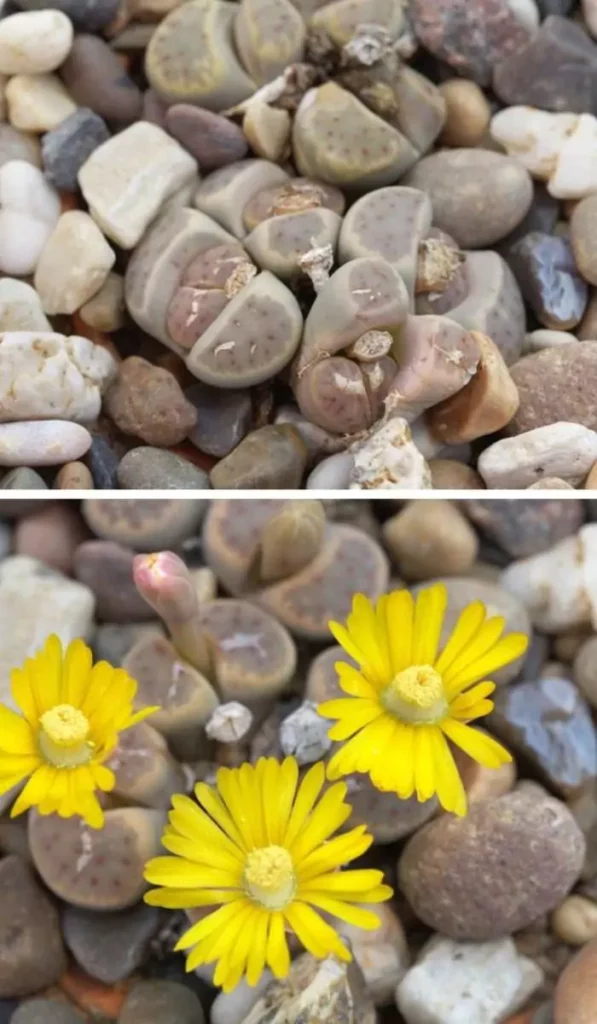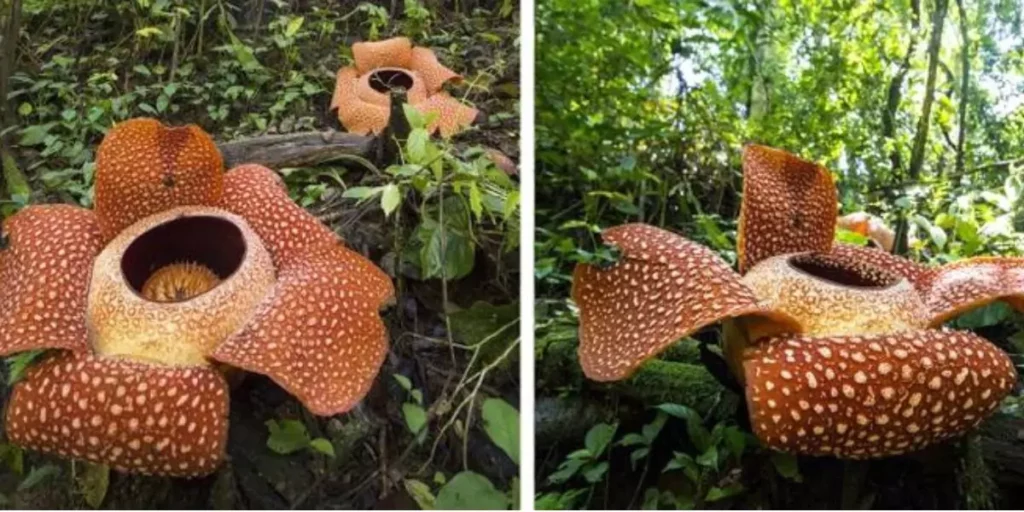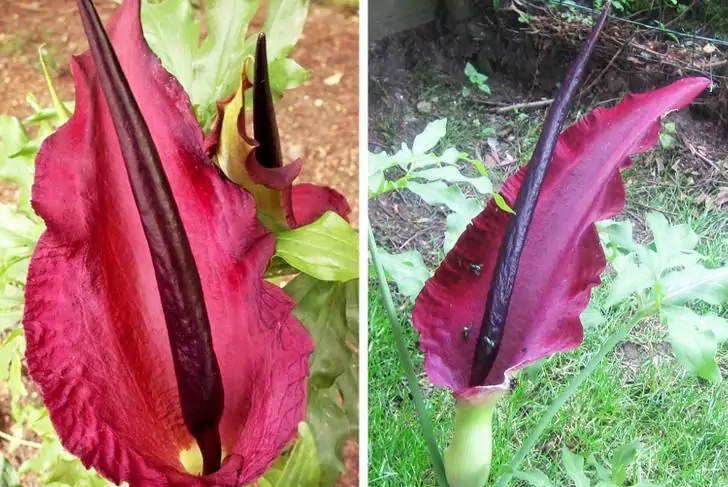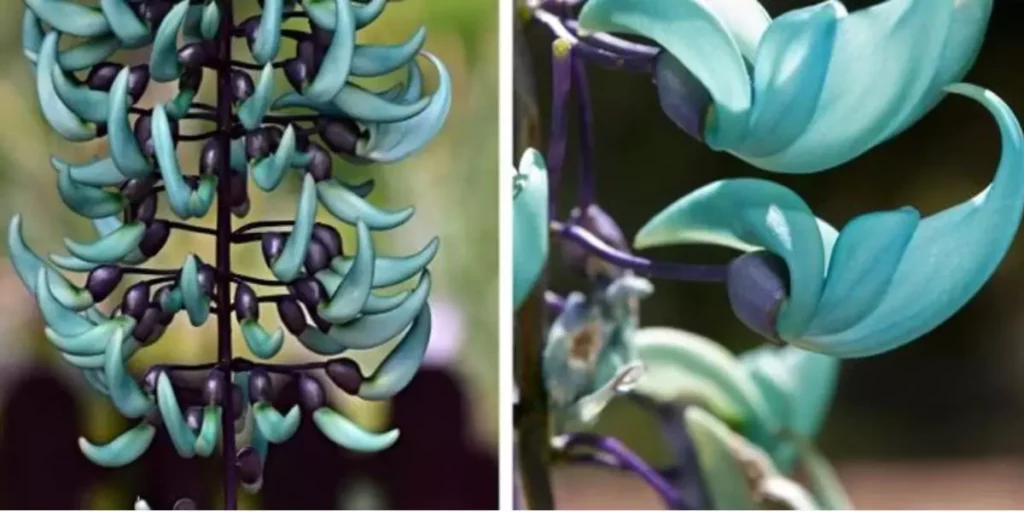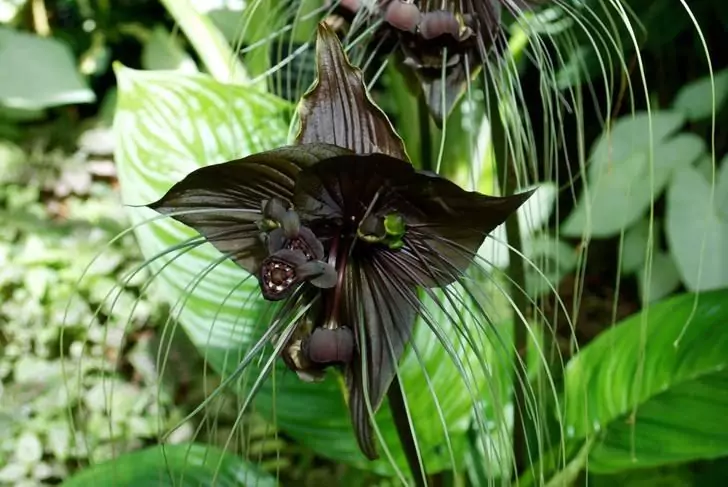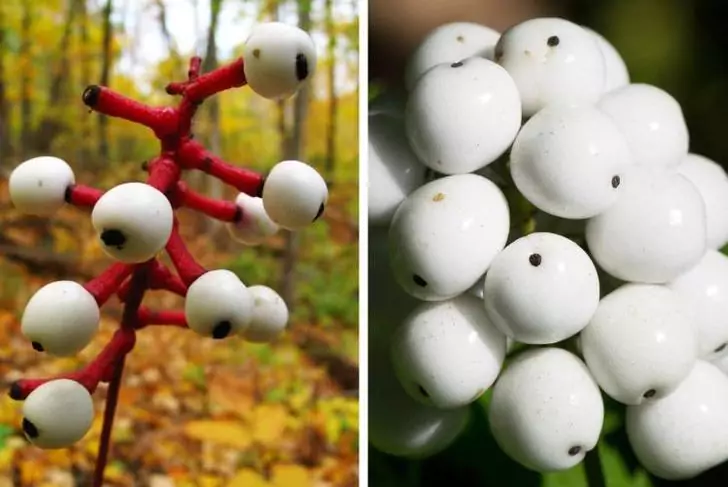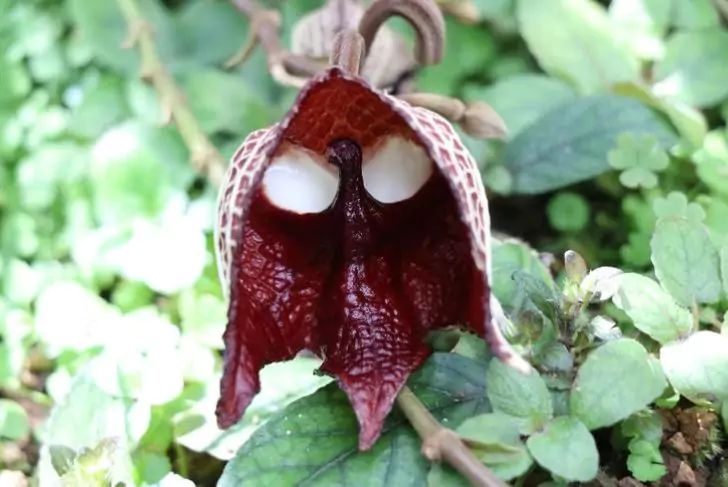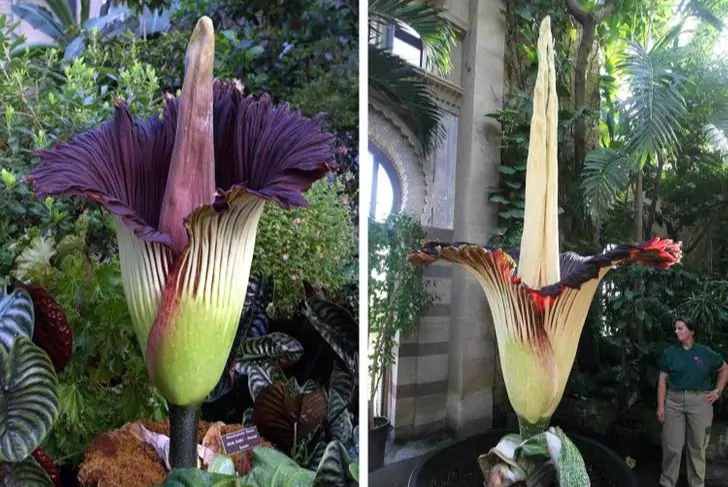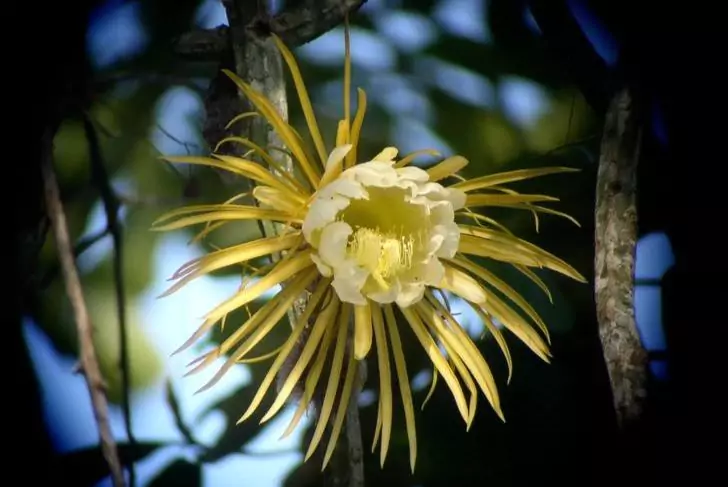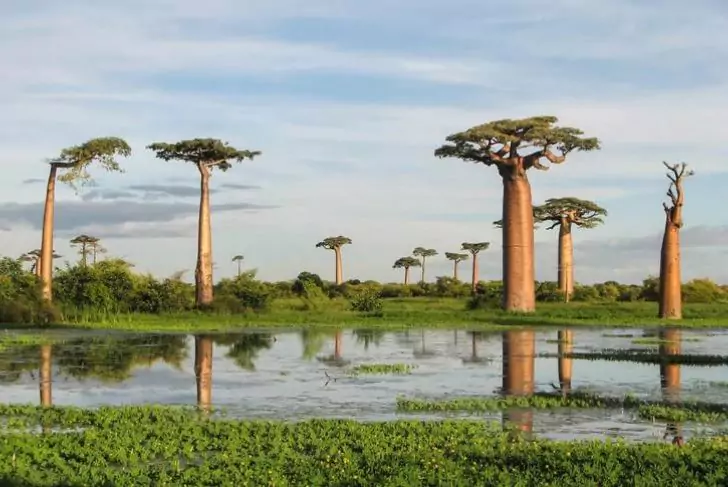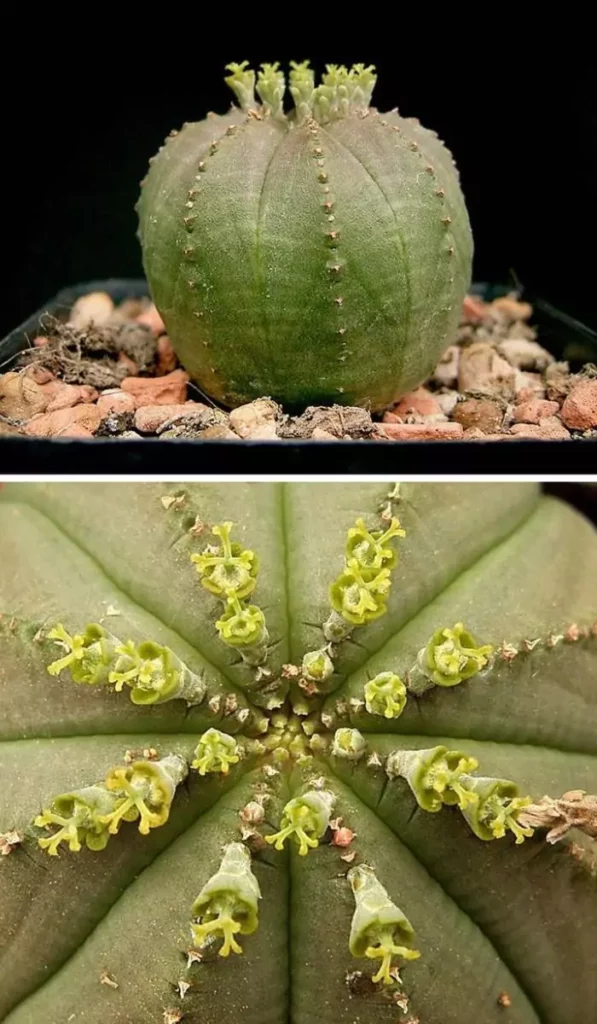Earth boasts a staggering variety of plant species, with nearly 422,000 identified by the International Union for Conservation of Nature, one of the world’s premier environmental organizations. This biodiversity results in the rich tapestry of colors, shapes, and sizes that grace our planet. However, among this incredible array, there are plants so peculiar and otherworldly that they could easily be mistaken for extraterrestrial specimens. In this compilation, we’ll introduce you to some of the strangest and most unique flowers that call Earth home.
1. Hydnora africana: The Beetle Trap
Endemic to Southern Africa
Hydnora africana is an enigmatic plant, primarily concealed beneath the earth’s surface, with only its fleshy flower emerging. What sets it apart is its unpleasant odor, which it uses to lure natural pollinators, particularly beetles. Once the beetles land on this intriguing plant, they find themselves briefly ensnared within its flowers, effectively acting as a transport mechanism for pollen, facilitating its species’ reproduction.
2. Drosera capensis: The Cape Sundew
Native to South Africa
Known as the Cape sundew, Drosera capensis is a carnivorous plant with sticky mucilage exuding from its hair-like structures. This viscous secretion serves to attract its prey, predominantly flies that become its nourishment. Capensis‘ unique feature is its remarkable ability to fold in on itself to capture unsuspecting insects.
3. Lithops: The Living Stones
Native to Southern Africa
Lithops, often referred to as “pebble plants” or “living stones,” might seem like ordinary rocks at first glance. However, these succulent plants are remarkable for their evolved camouflage, blending seamlessly with their arid surroundings. Each species exhibits diverse colors and produces flowers nestled between their leaves.
4. Rafflesia arnoldii: The Giant Flower
Found in Indonesian Rainforests
Rafflesia arnoldii, an inhabitant of Indonesian rainforests, boasts the title of the world’s largest flower. With blooms nearly a meter in diameter and weighing up to 11 kilos, it’s truly a botanical giant. Yet, this beauty emits a putrid odor to attract pollinating flies and leads a parasitic existence, drawing sustenance from the roots of trees.
5. Dracunculus vulgaris: The Dragon Lily
Endemic to the Balkans
With a large purple spathe, towering stem, and both male and female flowers, the dragon lily, or Dracunculus vulgaris, thrives in the Balkan region. It can withstand temperatures as low as 18°C and emits an odor reminiscent of rotting flesh to entice its pollinators.
6. Strongylodon macrobotrys: The Jade Vine
Indigenous to Philippine Rainforests
The jade vine, originating in Philippine rainforests, is recognizable by its claw-like, pale green leaves. Interestingly, bats are its natural pollinators, and it shares a botanical kinship with beans, like kidney beans.
7. Dracaena cinnabari: The Socotra Dragon Tree
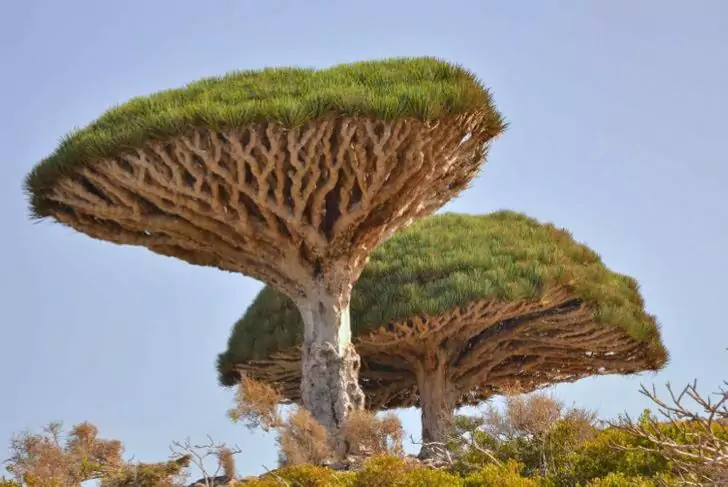
Native to Yemen’s Socotra Archipelago
Endemic to Yemen’s Socotra Archipelago, the Socotra dragon tree is a peculiar species with outward-spreading branches forming a semi-spherical crown. Its berries resemble small fruits, often consumed by birds, and ooze a red resin known as “dragon’s blood,” valued historically for dye and medicinal uses.
8. Tacca chantrieri: The Black Bat Flower
Endemic to Southeast Asia
Named for its dark bracts resembling bat wings, the black bat flower, or Tacca chantrieri, stands out. Additionally referred to as “cat whiskers,” this exotic plant is found in the wilderness of Southeast Asia, notably Malaysia, Thailand, and southern China.
9. Actaea pachypoda: The Doll’s Eyes
Endemic to Eastern United States and Canada
Actaea pachypoda stands out for its distinctive fruit, bearing poisonous white berries resembling human eyes. These berries, measuring around 0.5 inches in diameter, earned it the moniker “doll’s eyes.”
10. Aristolochia salvadorensis: The Darth Vader Plant
Endemic to Brazil
Aristolochia salvadorensis, a shrub native to Brazil, features a flower with a petal-less exterior and strikingly contrasting internal colors. Its appearance, resembling the iconic villain Darth Vader from Star Wars, has earned it the title “Darth Vader plant.”
11. Mimosa pudica: The Sensitive Plant
Originally from the Americas and Africa
Mimosa pudica, or the “sensitive plant,” hails from tropical regions in the Americas and Africa. It possesses a unique defense mechanism, as its leaves instantly fold when touched, making it appear withered and unappetizing to potential predators. This feature also minimizes water loss during arid seasons and shields it from strong winds.
12. Amorphophallus titanum: The Corpse Flower
World’s Largest Inflorescence
The corpse flower, or Amorphophallus titanum, produces the largest inflorescence globally, with colossal blooms that can reach up to 10 feet in height and weigh up to 339 pounds. This rare flower takes up to a decade to bloom, emits a foul odor, and hence is aptly named the “corpse flower.”
13. Selenicereus grandiflorus: The Queen of the Night
A Cactus Family Member
Native to Latin America and the Caribbean, Selenicereus grandiflorus is a cactus family member. It is recognized for its short-lived, nocturnal white flowers, lasting only a few hours, hence the name “queen of the night.”
14. Adansonia grandidieri: Grandidier’s Baobab
Symbol of Madagascar’s Biodiversity
Adansonia grandidieri, often considered the symbol of Madagascar’s biodiversity, is an endangered baobab species. These towering trees, with trunks reaching 82 to 98 feet in height and sparse branches, display leaves between October and May.
15. Euphorbia obesa: The Baseball Plant
Native to South Africa
Euphorbia obesa, also known as the “baseball plant,” grows in a spherical shape resembling a baseball, measuring 6 to 15 centimeters in diameter. Its unique “false flowers,” called cyathia, contribute to its decorative appearance, making it a popular choice for cultivation in homes and botanical gardens.
| Plant Name | Characteristics |
|---|---|
| Hydnora africana | – Endemic to Southern Africa. – Fleshy flower with an unpleasant odor, attracting beetles. |
| Drosera capensis | – Native to South Africa. – Carnivorous plant with sticky mucilage to capture prey, mainly flies. |
| Lithops | – Native to Southern Africa. – Succulent plants that resemble stones, providing camouflage. |
| Rafflesia arnoldii | – Found in Indonesian rainforests. – World’s largest flower with a foul odor for fly pollination. |
| Dracunculus vulgaris | – Endemic to the Balkans. – Large purple spathe with a rotting-meat-like odor to attract pollinators. |
| Strongylodon macrobotrys | – Indigenous to Philippine rainforests. – Pale green claw-like leaves and bat pollination. |
| Dracaena cinnabari | – Native to Yemen’s Socotra Archipelago. – Unique tree with red resin known as “dragon’s blood.” |
| Tacca chantrieri | – Endemic to Southeast Asia. – Black bat-like flowers, also known as “cat whiskers.” |
| Actaea pachypoda | – Endemic to Eastern United States and Canada. – White berries resembling doll’s eyes. |
| Aristolochia salvadorensis | – Endemic to Brazil. – Resembles Darth Vader due to its petal-less flower and distinct internal colors. |
| Mimosa pudica | – Originally from the Americas and Africa. – Leaves fold when touched as a defense mechanism. |
| Amorphophallus titanum | – World’s largest inflorescence with colossal blooms. – Foul odor, known as the “corpse flower.” |
| Selenicereus grandiflorus | – Native to Latin America and the Caribbean. – Short-lived, nocturnal white flowers. |
| Adansonia grandidieri | – Symbol of Madagascar’s biodiversity. – Tall tree with sparse branches. |
| Euphorbia obesa | – Native to South Africa. – Spherical shape resembling a baseball, with decorative false flowers. |
Conclusion
These extraordinary plants are a testament to the remarkable diversity of life on our planet. Which of these fascinating botanical wonders would you like to have in your own home? Do you know of any other exotic flowers that should be added to this list? Feel free to share your thoughts and pictures of your uncommon plants in the comment section below!
